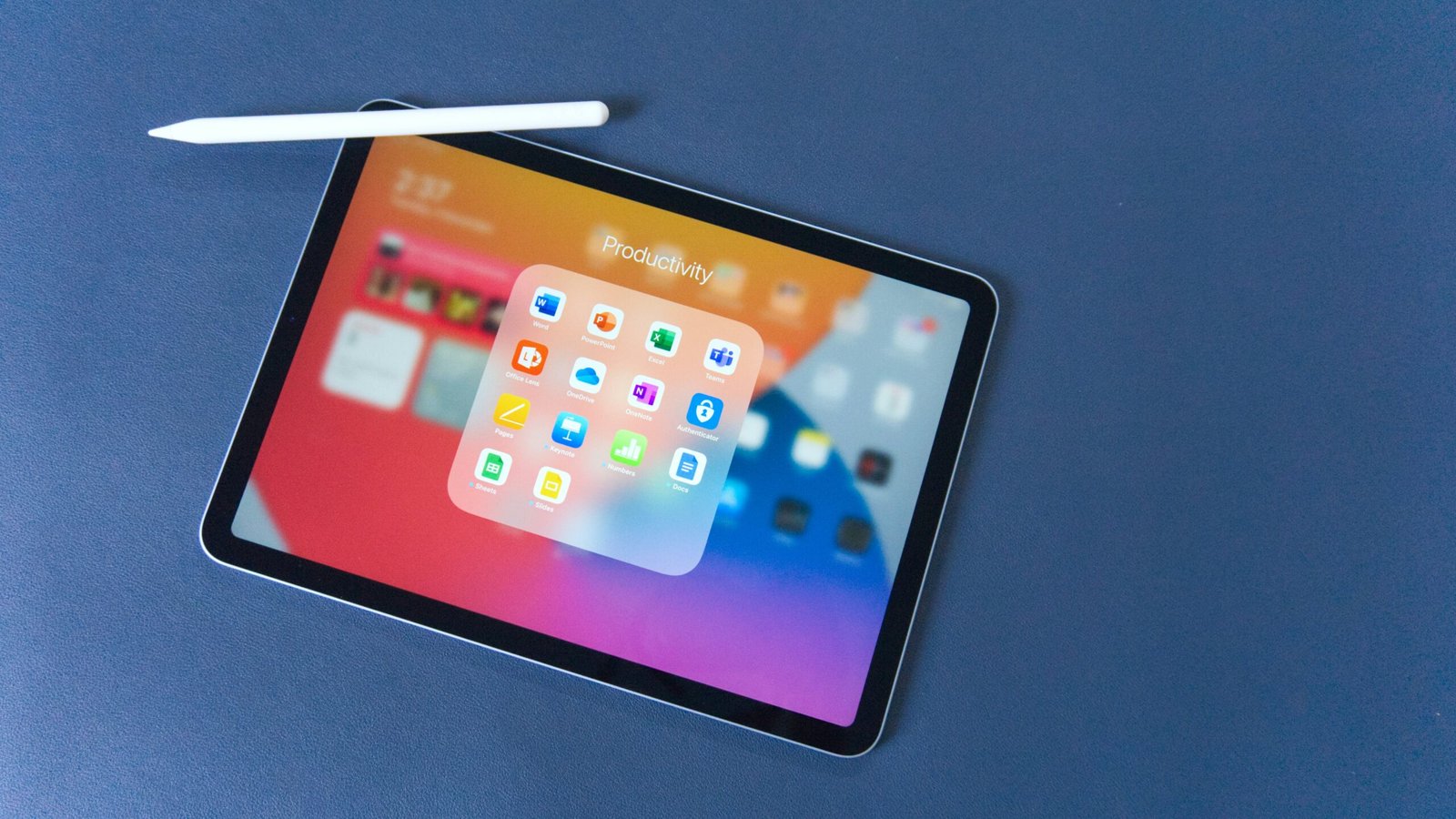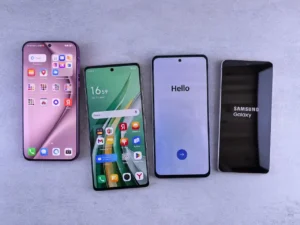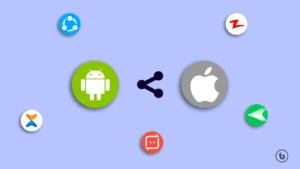Introduction to Mobile Gaming
Over the past decade, the mobile gaming landscape has experienced extraordinary growth, redefining how millions of users interact with entertainment. The advent of powerful smartphones has transformed casual gaming into a significant industry segment, attracting a diverse audience ranging from casual players to professional gamers. According to various industry reports, mobile gaming has emerged as one of the largest sectors of the gaming market, often outpacing traditional console and PC gaming in terms of revenue and player engagement.
This surge in popularity can be attributed to several factors. First, the accessibility of mobile devices allows users to engage with games anywhere and anytime, eliminating the constraints associated with traditional gaming systems. Furthermore, the continuous advancement of mobile technology, including high-resolution displays and robust processors, has enabled developers to create more sophisticated and immersive gaming experiences. Additionally, the proliferation of free-to-play titles has also played a key role, making mobile games available to a broader audience.
In today’s entertainment ecosystem, mobile gaming holds a significant place, showcasing the potential for innovation and engagement. Platforms such as Android and iOS have become central hubs for mobile gaming, catering to a vast array of genres and preferences. With the continuous rise in the number of developers creating engaging content for mobile devices, it is evident that the competition between these two operating systems is essential for shaping the future of gaming on mobile platforms.
As we delve deeper into the comparison between Android and iOS, it becomes essential to explore how each platform serves the mobile gaming community. Understanding the strengths and limitations of these systems will provide valuable insights into which may be better suited for different types of gamers. The ensuing sections will delve into various aspects of both platforms, setting the stage for a comprehensive evaluation of their capabilities in the mobile gaming arena.
Performance Comparison
When it comes to mobile gaming, the performance of the operating system can significantly influence the overall gaming experience. Android and iOS offer distinct advantages and limitations regarding processing power, graphics capabilities, and battery life. These factors are crucial in determining how games perform on these devices.
First, the processing power of devices running these operating systems can vary substantially. Android devices often encompass a wider range of hardware, ranging from entry-level models to high-end flagship phones. This diversity means that while a premium Android device can compete with iOS in raw processing power, lesser-known brands may struggle in delivering a seamless gaming experience. Conversely, iOS devices, particularly models like the iPhone, are optimized to deliver excellent performance consistently across the board. The tight integration of hardware and software within the Apple ecosystem often results in superior frame rates and faster load times for iOS games.
Next, graphical capabilities also play a vital role in gaming performance. High-end Android devices typically feature advanced GPUs that compete well with Apple’s A-series chips, but again, the disparity in hardware means that not all Android phones can provide a top-tier graphics experience for mobile gaming. Games are optimized for the iOS platform, often leading to a better graphical fidelity and visual effects in many cases. Game developers often prioritize optimization for iOS due to its consistent hardware architecture across devices.
Battery life is another critical consideration for gamers. Devices powered by iOS generally show impressive battery management, allowing for prolonged gaming sessions without sacrificing performance. Many Android devices, particularly those running heavier skins or background processes, may experience faster battery drain during intense gaming. This difference can be a deciding factor for gamers who frequently engage in mobile gaming for extended periods.
Overall, while both operating systems have their merits, the interplay of processing power, graphics capabilities, and battery life results in varied gaming experiences that can tip the scales in favor of one platform over the other based on the user’s needs and device choice.
Exclusive Titles: What’s Available on Each Platform?
The landscape of mobile gaming is continuously evolving, with both Android and iOS platforms boasting an impressive array of exclusive titles that significantly influence user preferences and experiences. These exclusive games often serve as key differentiators that draw users toward one platform over the other.
On the iOS side, Apple has established a strong portfolio of exclusive games that showcase its hardware capabilities and innovative technology. Titles such as “Monument Valley,” known for its beautifully crafted puzzles and stunning visuals, and “Oceanhorn,” reminiscent of classic console adventures, are only available on iOS. Additionally, “Grindstone” and “The Room” series have garnered critical acclaim for their engaging gameplay and immersive environments, highlighting Apple’s ability to attract top-tier developers to its ecosystem.
Conversely, Android also offers its unique set of exclusive titles, which cater to various gaming preferences. The platform is home to games like “PUBG Mobile,” a fiercely popular battle royale that has attracted a massive following. “Call of Duty: Mobile” also enjoys exclusive features on Android, providing players with various multiplayer modes and PvE battles. Furthermore, Android’s open-source nature allows for innovative titles like “Minecraft Earth,” a location-based augmented reality game that encourages exploration and creativity.
The impact of these exclusive titles on platform popularity cannot be understated. Gamers often seek out platforms that host their preferred games, thus creating loyalty among users. As titles shift or expand their accessibility, the competition between platforms intensifies, making exclusivity a critical factor in user acquisition strategies. In the intricacies of gaming experiences, the unique offerings available solely on either iOS or Android immensely contribute to a player’s satisfaction and overall engagement.
User Experience and Interface
The user experience (UX) and interface design play a pivotal role in the world of mobile gaming, influencing how gamers interact with their devices on both Android and iOS platforms. Each operating system offers distinctive design philosophies that reflect their approaches to usability. Android’s interface is often characterized by its customization options, allowing users to modify the layout and appearance of their gaming experience. This freedom can enrich user engagement but may also lead to a more fragmented experience across different devices. In contrast, iOS presents a more uniform interface, focusing on simplicity and ease of navigation, providing players with an intuitive experience that is consistent across its ecosystem.
Accessibility features further enhance the gaming experience on these platforms. iOS is well-regarded for its robust accessibility tools, including VoiceOver and customizable touch gestures, making games more approachable for players with disabilities. Android, while also offering various accessibility options, has a wider variance in implementation due to the diversity of devices and manufacturers that run the operating system. As such, the effectiveness of these features can differ significantly based on the specific Android device in use.
The overall aesthetic of the gaming platform is another critical aspect to consider. iOS typically emphasizes visual harmony, with a design that is sleek and cohesive, contributing to an immersive gaming environment. Conversely, Android can be perceived as fragmented due to the variety of skins and themes available, leading to a more diverse, yet sometimes inconsistent, aesthetic appeal among its games. Ultimately, the user experience in mobile gaming hinges on these interface aspects, as they shape how gamers perceive and enjoy their gameplay, influencing their preferences for Android or iOS as gaming platforms.
Social and Community Aspects of Mobile Gaming
The social and community dimensions of mobile gaming play a significant role in shaping a player’s overall experience. Both Android and iOS platforms offer distinct capabilities for fostering community engagement, enabling players to connect, collaborate, and compete with one another. This interaction is often facilitated through various forums, social media platforms, and in-game multiplayer functionalities, thereby creating a vibrant ecosystem for gamers.
On the Android platform, diverse gaming communities thrive on forums such as Reddit and specialized gaming websites. These forums provide a space for players to discuss strategies, share tips, or even post reviews on new games. Furthermore, social media groups on platforms like Facebook and Discord enable real-time communication among players, enhancing the sense of belonging and support within the community. With the flexibility of Android, many games offer expansive multiplayer experiences, allowing players to team up or challenge friends, thereby forging deeper connections.
In contrast, iOS has its unique way of fostering community through Apple’s ecosystem. The platform often enhances user engagement via robust integration with services like Game Center, which offers players leaderboards, achievements, and friend matchmaking. Additionally, Apple Arcade brings a collection of games that players can explore together, cultivating a shared journey among users. Social media and forums for iOS users also serve to create discussions and enhance collaboration within the community, similar to Android, but with a streamlined interface characteristic of Apple products.
Ultimately, regardless of the platform, mobile gaming communities enrich the gaming experience by promoting social interaction and fostering collaborative play. Players are often incentivized to form bonds over shared gaming interests, which can turn casual pastimes into a profound social activity, bridging gaps between friends and helping make sense of the gaming landscape as a whole.
Hardware Variability: A Double-Edged Sword
When evaluating the impact of hardware variability on mobile gaming, it is essential to consider the contrasting ecosystems of Android and iOS. Android devices showcase a broad spectrum of hardware configurations due to the open-source nature of the operating system. This variability means that users can find smartphones with various specifications, from budget-friendly models with minimal processing power to high-end devices equipped with the latest technology. Consequently, gamers on Android can select devices tailored to their specific needs and budget, which can enhance accessibility for a broader audience.
However, the diversity in hardware can also lead to challenges. Developers face the daunting task of optimizing games for numerous devices, each with unique processors, RAM, and graphics capabilities. As a result, games may perform inconsistently across different Android smartphones, leading to potential issues such as frame rate drops, graphical glitches, or even game crashes on lower-end models. This inconsistency can obstruct the gaming experience, especially for titles demanding high performance, causing frustration among users who expect uniform quality.
On the contrary, iOS devices present a more standardized hardware lineup that allows developers to create games with specific performance benchmarks in mind. Since Apple controls both the hardware and software, developers can ensure a higher level of optimization for their games, resulting in enhanced performance and stability. This streamlined environment tends to facilitate a more refined gaming experience, but it also limits users’ choices when it comes to modifying or upgrading their devices to meet personal gaming preferences.
Thus, while the hardware variability of Android provides a wider selection, it may also introduce performance uncertainties. Conversely, iOS offers a more predictable gaming environment but at the cost of flexibility in device selection. Ultimately, the choice between Android and iOS for mobile gaming may hinge upon individual priorities, be it accessibility or optimized performance.
App Store vs. Google Play: An Overview
The mobile gaming industry continues to thrive, largely driven by the two dominant platforms: Apple’s App Store and Google Play. Each store exhibits distinct characteristics that significantly affect game availability, curation, user reviews, and monetization strategies. Understanding these differences is essential for both developers and gamers aiming to navigate the mobile gaming landscape effectively.
Starting with game availability, the App Store has a more exclusive selection due to its strict licensing agreements and rigorous review process. While this ensures higher quality standards, it can limit the variety of games available to users. In contrast, Google Play provides a more open ecosystem, allowing developers more freedom to launch their games quickly. However, this freedom can lead to an overwhelming abundance of low-quality titles, complicating the search for the best games.
Curation is another significant differentiator. The App Store’s curated lists are meticulously crafted, often favoring high-quality and innovative games. This can lead to increased visibility for developers whose games meet Apple’s stringent criteria. Conversely, Google Play’s algorithm-driven approach relies heavily on user engagement metrics, which can sometimes prioritize games based on popularity rather than quality. This difference impacts how gamers discover new titles, with App Store users enjoying a more expertly filtered selection.
User reviews also play a crucial role in shaping each platform’s gaming environment. The App Store tends to have more rigorous controls over fraudulent reviews, resulting in generally trustworthy feedback. Meanwhile, Google Play faces challenges regarding review authenticity due to its open nature, allowing for numerous unverified comments that can skew perceptions of a game.
Finally, monetization strategies differ markedly between the two platforms. The App Store typically favors premium pricing and subscription models, while Google Play offers more varied monetization options, including ads and in-app purchases. Developers must consider these factors when choosing a platform, as they directly influence the potential success of their games. Understanding these differences empowers both gamers and developers to strategize their experiences within the mobile gaming arena.
In-App Purchases and Monetization Models
Mobile gaming has evolved into a multi-billion dollar industry, and a significant part of its revenue comes from monetization models employed by developers on various platforms, particularly Android and iOS. The primary monetization strategies include in-app purchases, subscriptions, and advertisements, each offering distinct advantages and challenges for both players and developers.
In-app purchases (IAP) are perhaps the most prevalent monetization model found in mobile games. This model allows players to buy virtual goods or upgrades within a game, often enhancing gameplay or providing a competitive edge. Both Android and iOS games extensively leverage this approach, with many free-to-play titles offering enticing items, characters, or premium content. While IAP can significantly boost a game’s revenue, they may also lead to frustrations among players, particularly if the game appears to promote a ‘pay-to-win’ structure. This can result in negative user experience, potentially driving players away.
Subscription models have gained traction, offering players access to a suite of games or exclusive content for a recurring fee. Platforms like Apple Arcade exemplify this approach, providing users a curated selection of ad-free games for a monthly subscription. This model appeals to users who prefer consistent access without the pressure to make frequent in-game purchases. Subscriptions can stabilize revenue streams for developers while offering players predictable costs.
Advertising is another common monetization tactic in mobile gaming. Games often incorporate ads in various forms, such as banners, interstitials, or rewarded videos. While advertising can generate considerable income, excessive or intrusive ads may diminish the gaming experience, frustrating users. Thus, developers must strike a careful balance between generating revenue and maintaining player satisfaction.
Conclusion: Which Platform Reigns Supreme for Mobile Gaming?
As we reflect on the intricacies of mobile gaming within the Android and iOS ecosystems, a balanced assessment is essential to determine which platform may be considered superior. Both operating systems exhibit distinct strengths and weaknesses that could influence a gamer’s experience. Performance is a significant factor; iOS is often recognized for its robust hardware integration and optimization, resulting in smoother gameplay and better graphics rendering. In contrast, high-performing Android devices are available, but performance can vary widely due to the multitude of manufacturers and hardware configurations.
Another critical aspect is the library of exclusive titles. iOS consistently attracts developers with its lucrative market, leading to a plethora of high-quality exclusive games. This can be a deciding factor for gamers who are fond of specific titles that may only be available on iOS. However, Android’s open ecosystem provides gamers with a diverse range of games, including indie offerings that may not make their way to iOS.
User experience is another area worthy of consideration. iOS is celebrated for its streamlined interface and cohesive user experience. Conversely, Android offers customization options that allow players to tailor their gaming environment, which can be appealing to those who prefer a personalized interface. Additionally, the communities surrounding each platform differ, with iOS gamers often enjoying a more curated online experience, while Android users benefit from a diverse and expansive community of gamers.
In light of these factors—performance, exclusive titles, user experience, and community engagement—the question of which platform reigns supreme for mobile gaming does not have a definitive answer. Ultimately, the choice between Android and iOS depends on individual preferences and priorities. Both platforms offer unique advantages, and the best option will vary from gamer to gamer.




